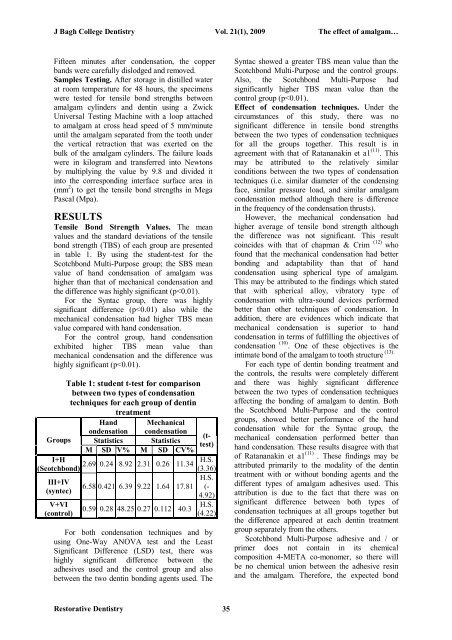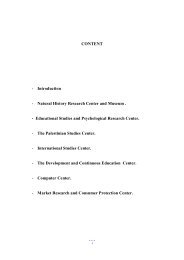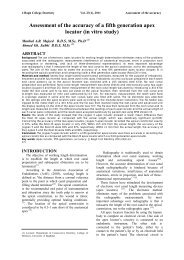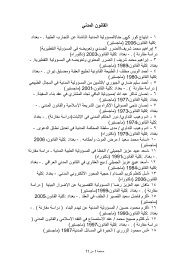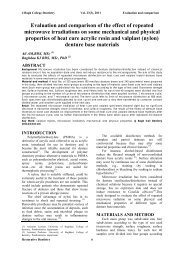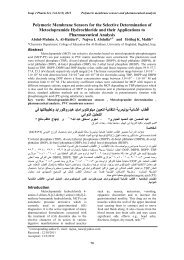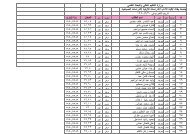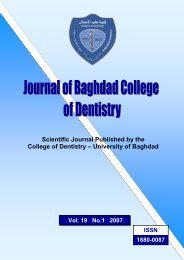Vol 21 No. 1
Vol 21 No. 1
Vol 21 No. 1
You also want an ePaper? Increase the reach of your titles
YUMPU automatically turns print PDFs into web optimized ePapers that Google loves.
J Bagh College Dentistry <strong>Vol</strong>. <strong>21</strong>(1), 2009 The effect of amalgam…<br />
Fifteen minutes after condensation, the copper<br />
bands were carefully dislodged and removed.<br />
Samples Testing. After storage in distilled water<br />
at room temperature for 48 hours, the specimens<br />
were tested for tensile bond strengths between<br />
amalgam cylinders and dentin using a Zwick<br />
Universal Testing Machine with a loop attached<br />
to amalgam at cross head speed of 5 mm/minute<br />
until the amalgam separated from the tooth under<br />
the vertical retraction that was exerted on the<br />
bulk of the amalgam cylinders. The failure loads<br />
were in kilogram and transferred into Newtons<br />
by multiplying the value by 9.8 and divided it<br />
into the corresponding interface surface area in<br />
(mm 2 ) to get the tensile bond strengths in Mega<br />
Pascal (Mpa).<br />
RESULTS<br />
Tensile Bond Strength Values. The mean<br />
values and the standard deviations of the tensile<br />
bond strength (TBS) of each group are presented<br />
in table 1. By using the student-test for the<br />
Scotchbond Multi-Purpose group; the SBS mean<br />
value of hand condensation of amalgam was<br />
higher than that of mechanical condensation and<br />
the difference was highly significant (p


